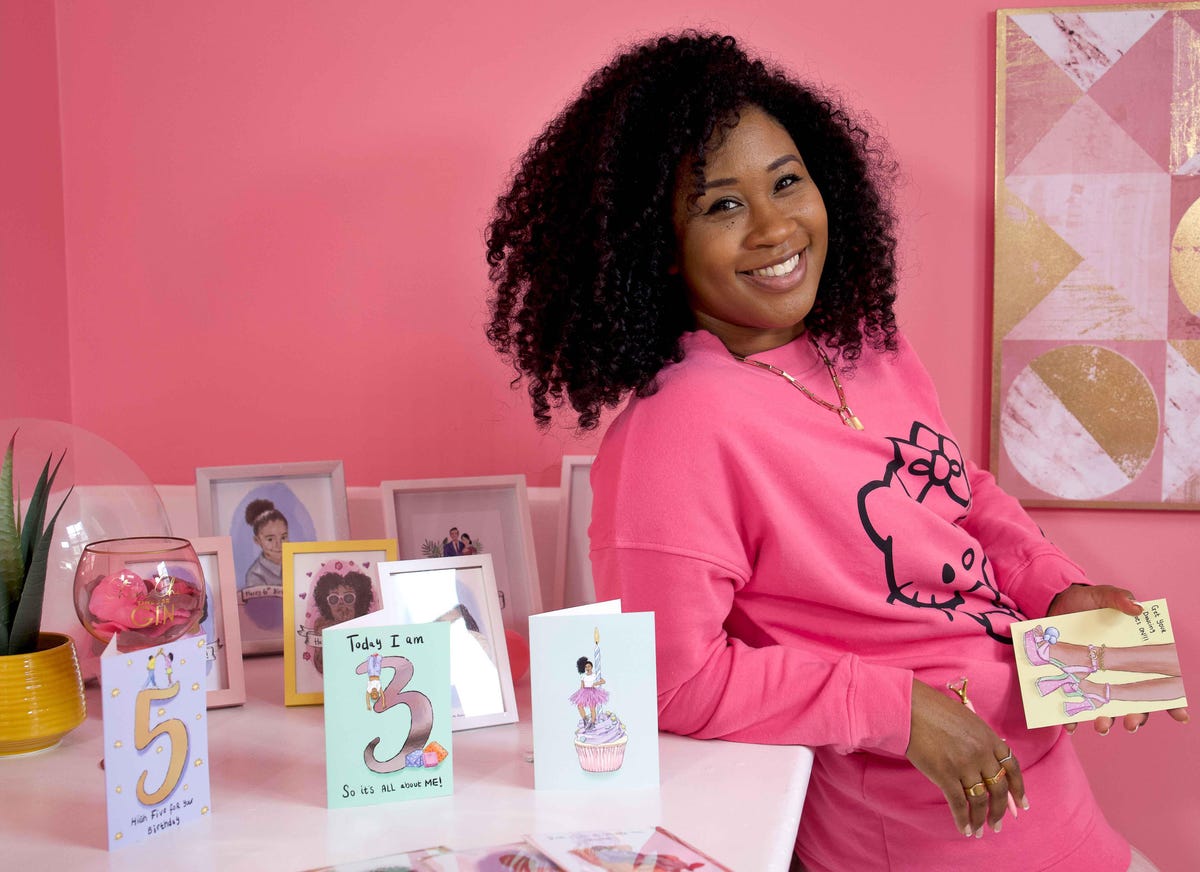
KitschNoir founder Cherelle Brown with her Black greetings cards. As Black History Month draws to a … [+]
When Cherelle Brown, founder of Black greetings card brand KitschNoir, was 28, she realised what a huge gap there was when it came to cards that represented typical black families.
“It suddenly dawned on me that all the cards I had been buying and receiving from friends and family bore absolutely no resemblance to how we look! I have memories of always having a brown felt tip at the ready to colour in the characters on greeting cards” she explains.
With Black History Month drawing to a close, and with the Black Lives Matter continuing to highlight the need for an open dialogue on addressing inequality, creating a more representative retail industry with a broader range of products must be top of the list for retailers.
The Importance Of Representation
Representation in the products that retailers stock is not only long overdue, but creates a strong emotional response in customers, many who have lived their whole lives without seeing themselves or their families reflected in the products that are available.
Desriee Asomuyide, founder of Little Omo, an inclusive educational brand that represents black and brown children, and helps other children to be more culturally aware of the people and world around them, has seen first hand the positive impact of creating products that represent the people buying them.
MORE FOR YOU
“It’s such an amazing feeling for them to finally see their children represented through the products I sell. A majority of black and brown individuals didn’t have greeting cards, learning materials or toys that represented them during their childhood.”
Brown agrees, stating that the feedback from customers has been “overwhelming”. “A lot of my customers who are above 30 are even surprised at themselves, that they had been receiving cards that didn’t resemble them all their lives and just accepted it,” she reveals.
Natalie Duvall, co-founder of March Muses, the leading supplier of Black Christmas decorations in the UK, points out how despite the fact that “Christmas should be for everyone”, the UK has a “severe lack of representation” across decorations.
“Our customers are so surprised it took so long for these decorations to come to market,” she explains. “Sadly there are still a lot of people who just don’t realise the lack of representation in Christmas decorations, with the overwhelming response being “oh, I never noticed”. It just shows how far we still need to go.”
The Need For Real Change
Since the rise of the Black Lives Matter movement in 2020, there has been a growing realisation for the need for more diverse products, however, there is still a long way to go.
“Some retailers have been making the conscious decision to reach out to businesses that are focusing on representation,” states Asomuyide, who would like to see these conversations taken further. “There are still some retailers that need to be having more conversations within their team to diversify their product range in store. Diverse products aren’t a trend, it’s something that is needed as we live in a multicultural world with more than one race – everyone needs to be represented.”
Brown also noticed a “wave of brands who pledged to improve their diversity and representation in 2020,” and Kitsch Noir is now stocked in several national retailers including Paperchase, Scribbler, Moonpig, Waterstones and Tesco. But not all of those who made this pledge in 2020 are fulfilling their promises.
She goes on to say: “I appreciate brands like Moonpig who seem to be continuing the conversation. I really hope diversity and representation becomes a regular and natural practice and is not a topic that comes up every once in a while.”
As Duvall points out, some attempts to diversify product ranges do not go far enough. “There is a severe lack of diversity in supermarket decorations… and while we are starting to see the odd Black ballerina decoration is the shelf, is it often just a white ballerina painted black with no thought of hair type or skin tone and usually not designed by a Black creator,” she discloses.
The way forward
As Duvall puts it, “Black is not a trend” and the change has to come from the top. “We do want to encourage retailers to go beyond just media images, and consider how inclusive their products are and also what their leadership level roles look like. Once we start to diversify the boardroom, it will have a trickle down effect, .
Asomuyide agrees: “there is a lot of work that needs to be done, retailers that are stocking just 1 or 2 diverse brands need to understand that isn’t improvement, there needs to be significant change and a variety of products from different businesses to choose from. The only way for consumers to be able to easily browse and purchase diverse products, is by making it accessible in the big-chain retailers.”
The time for building a more inclusive and representative retail industry is now. As Duvall concludes: “now, more than ever, consumers want authentic rather than performative gestures and products.”







